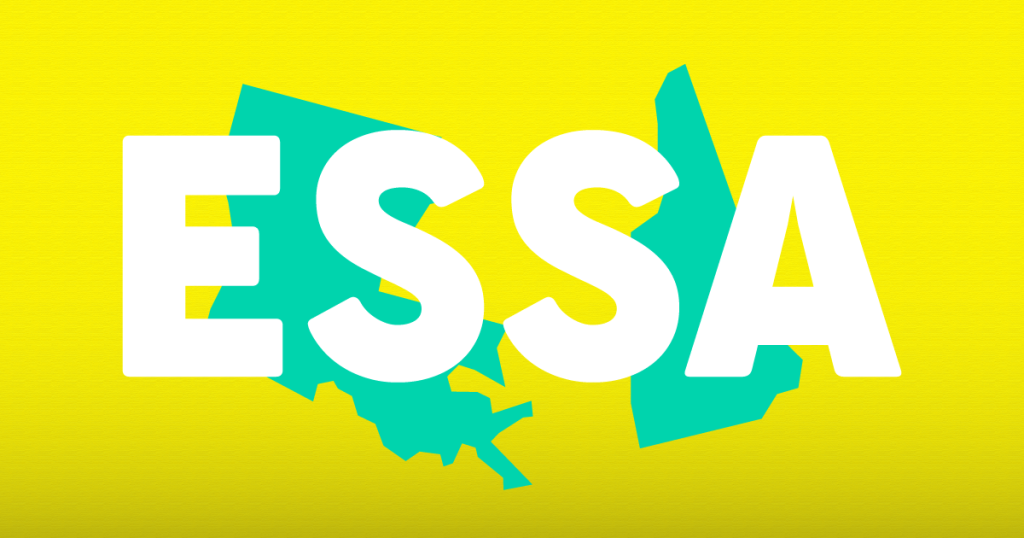Earlier this week, Secretary DeVos announced the US Department of Education (USDE) had approved New Hampshire as the second state to participate in the Every Student Succeeds Act’s (ESSA) Innovative Assessment Pilot. New Hampshire joins Louisiana, which was the first state Secretary Devos approved to participate in the Pilot.
So, what is the Innovative Assessment Pilot? Like No Child Left Behind, ESSA requires states to use a statewide standardized test in grades 3-8 and once in high school for English and mathematics. However, ESSA created an opportunity for up to seven states—or groups of states—to participate in the Innovative Assessment Pilot and try new kinds of assessments in a select number of districts instead of the standardized state assessment.
The Pilot was inspired by the work New Hampshire has done since 2015 with their Performance Assessment of Competency Education (PACE) accountability system, which they were able to do with flexibilities from the No Child Left Behind waiver.
With five slots open, USDE published a notice on September 17, inviting applications for the second round of the Innovative Assessment Pilot. The deadline is December 17, with Georgia already indicating they want to apply.
This post will provide an overview of both Louisiana and New Hampshire’s innovative assessments, as well as discuss other assessment flexibilities states are taking advantage of under ESSA.
Louisiana: English and Social Studies Innovative Assessment
On July 24, the USDE gave Louisiana the go ahead to participate in the Innovative Assessment Pilot. Initially, five school systems—Ouachita Paris, St. John the Baptist Parish, and St. Tammamy Parish, as well as KIPP Public Charter Schools and College Academies in New Orleans Parish—will participate in the Pilot. This equates to 20 high schools that serve nearly 21,000 students.
According to John White, Louisiana’s State Superintendent, “Research shows students need deep knowledge of a subject in order to effectively read about it. Louisiana’s pilot offers a unique opportunity to develop assessments that support this research.”
Key features of Louisiana’s Pilot include:
- Streamlining state testing by combining English and social studies assessments;
- Measuring what students have learned via passages from books students have already read, rather than passages they have not read as part of the curriculum;
- Assessing students through several brief assessments throughout the year, instead of one longer assessment at the end of the year; and
- Preserving local control as to which books and assessments their students will take.
Louisiana has five years to develop, pilot, and expand their Innovative Pilot.
New Hampshire Continues With Innovative PACE Accountability System
New Hampshire will not have to start its innovative assessment from scratch. As previously mentioned, New Hampshire has been doing this work since 2015. The flexibility granted to New Hampshire by USDE allows them to continue to build on this work.
In June 2017, Education Evolving and the Bush Foundation hosted two of PACE’s architects—Deputy Commissioner Paul Leather and the state’s PACE curriculum director, Ellen Hume-Howard—to discuss the innovative way they use assessments.
In the PACE pilot, students only take the reading standardized assessment in 3rd and 8th grade, the mathematics assessment in 4th and 8th grade, and the SAT in 11th grade. In the other years, students take common PACE performance-based assessments. Hume-Howard provided several examples of these assessments, which range in topics from a “Speed Stacking Challenge,” where students connect real-world experiences to their math work with decimals, to first-person narrative journals where students write about how their character deals with social issues.
At the event, Deputy Commissioner Leather contended that one of the exciting things about PACE is not necessarily that the standardized testing is reduced, but rather that the performance-based assessments that replace them are seamlessly integrated into the curriculum. Hume-Howard drove this point home, “Our assessments are not events.”
Other Assessment Flexibility Opportunities in ESSA
ESSA created a couple of other opportunities for all states—even those who did not apply for one of the 7 waivers described above—to engage in assessment flexibilities.
One of the flexibilities are interim assessments. Under ESSA, states are allowed to use multiple assessments through an academic year, rather than just a single summative assessment. According to Measured Progress, “…a state or consortium of states could be truly innovative by implementing a two-component assessment system consisting of, for example, curriculum-embedded performance assessments and a shortened end-of-year summative assessment.”
However, no states have decided to use this flexibility. Why? According to Kirsten Carr, senior program director at the Council of Chief State School Officers, many states had spent most of their time drafting and submitting their accountability plans, leaving them with little room to try changing their assessments. Now that all states’ plans have been approved, they can turn their attention to thinking about the various testing options that ESSA allows for.
Another assessment flexibility creates the opportunity for states to allow individual districts to opt-out of their state’s high school standardized assessment and instead use a “nationally recognized” high school assessment, like the ACT or SAT. However, North Dakota is currently the only state that has received USDE approval and allows districts to use the ACT instead of its state assessment.
Several states have had problems with getting USDE approval. Wisconsin, Wyoming, and Connecticut tried to get this flexibility, but were denied by USDE because of “insufficient alignment” with their standards.
Oklahoma initially took another route and decided to end its required high school end-of-course assessments, and was going to allow districts to choose between the ACT and SAT. However, USDE said that, because of concerns with comparability, the state had to choose one assessment as its “default”. Oklahoma chose the SAT.
Minnesota is currently exploring this assessment flexibility for the ACT.
Found this useful? Questions? Sign up to receive Education Evolving blog posts by email or contact the author, Krista Kaput at krista@educationevolving.org. Also, stay tuned for our upcoming paper on defining and measuring student-centered outcomes, coming October 2018.
